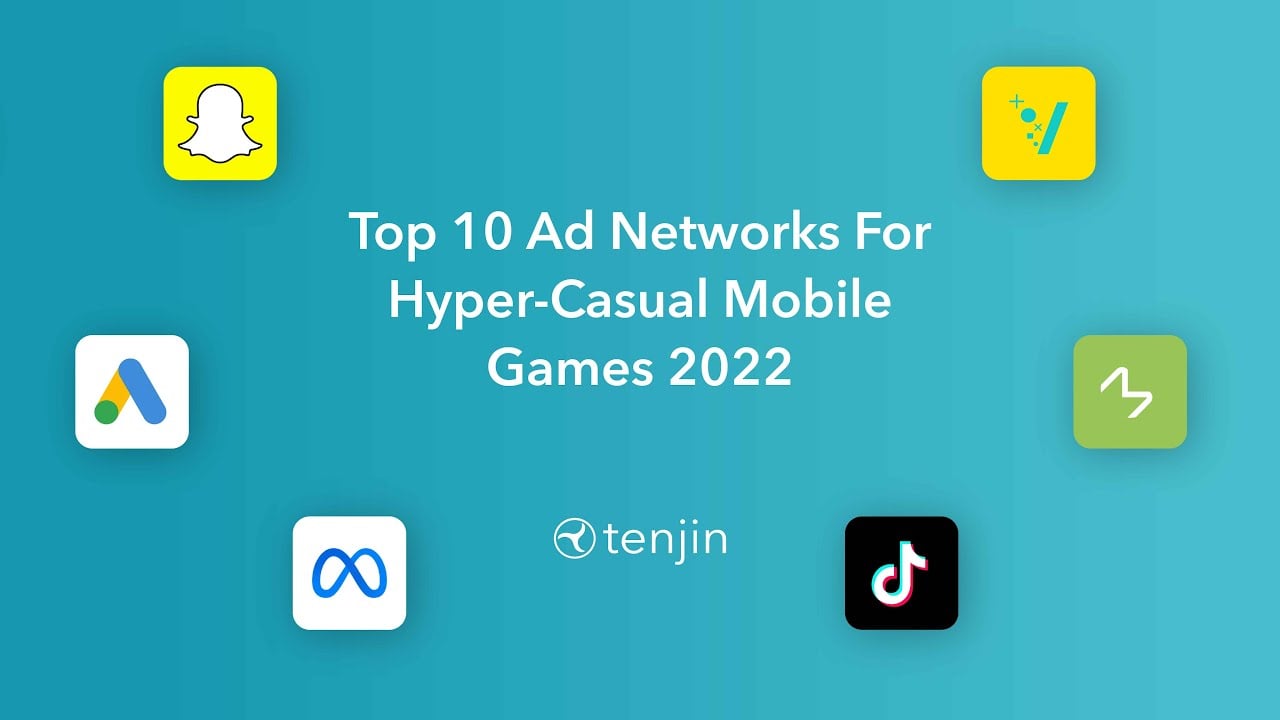In today’s hyper-connected world, where mobile devices have become an extension of ourselves, the mobile gaming industry has exploded, captivating millions of users around the globe. But behind the scenes, there is a crucial player that ensures the seamless integration of advertising into these addictive games: the mobile game adnetwork.
These networks act as the vital middleman, bridging the gap between publishers and advertisers, and unleashing the full potential of the mobile gaming market. From monitoring the performance of ads to offering various pricing models, the top networks like Google Ads and Facebook continue to dominate the industry.
Join us as we delve deeper into the fascinating realm of mobile game ad networks, where innovation and opportunity collide.
Table of Contents
- mobile game ad network
- Introduction To Mobile Ad Networks
- Benefits Of Mobile Ad Networks
- Importance Of Choosing The Right Mobile Ad Network
- Rise Of In-Application Advertising
- Programmatic Advertising And Its Challenges
- Artificial Intelligence Algorithms As A Solution
- Pricing Models And Ad Formats In Mobile Ad Networks
- Top Mobile Ad Networks For Mobile Game Advertising
- Conclusion
mobile game ad network
A mobile game ad network serves as an intermediary platform connecting publishers and advertisers in the ad industry. These networks obtain ad spaces from publishers and then sell them to advertisers and app developers.
They also provide monitoring and tracking support to ensure the performance of ad campaigns. Choosing the right mobile ad network is crucial for the success of advertising campaigns and revenue generation.
In the rapidly growing mobile advertising industry, moving operations into the online programmatic area has become necessary. However, programmatic advertising has downsides like lower engagement rates and a higher risk of ad fraud.
To address these challenges, artificial intelligence algorithms are being implemented. Different pricing models and ad formats, such as interstitial ads, banner ads, native ads, offerwall ads, and video ads, are available in mobile ad networks.
The major business models employed are CPC, CPI, and CPA, while CPV is specific to networks offering video ad campaigns. Some top mobile ad networks for acquiring and retaining users in mobile games are Google Ads and Unity Ads.
For monetizing mobile games, ironSource, Facebook, and Mintegral are mentioned. Other ad networks relevant to mobile game advertising include AppLovin, Vungle, TikTok for Business, and SHAREit.
Rankings based on indexes like retention, SKAN, and IAA index can help in choosing the right ad network. Notably, Facebook and Google continue to dominate most rankings, highlighting their significance in the industry.
Key Points:
- Mobile game ad networks connect publishers and advertisers in the ad industry, selling ad spaces obtained from publishers.
- They offer monitoring and tracking support for ad campaigns to ensure performance and success.
- Artificial intelligence algorithms are being implemented to address challenges in programmatic advertising.
- Different pricing models and ad formats, such as interstitial ads, banner ads, native ads, offerwall ads, and video ads, are available.
- Top mobile ad networks for acquiring and retaining users in mobile games include Google Ads and Unity Ads.
- For monetizing mobile games, ironSource, Facebook, and Mintegral are mentioned, along with other relevant ad networks like AppLovin, Vungle, TikTok for Business, and SHAREit.
Sources
https://www.businessofapps.com/ads/mobile-ad-network/
https://www.blog.udonis.co/mobile-marketing/mobile-games/top-15-game-ad-networks
https://www.publift.com/blog/best-gaming-ad-networks
https://www.gamebizconsulting.com/blog/best-ad-networks-mobile-game-app
Check this out:
💡 Pro Tips:
1. Look for ad networks that offer advanced targeting options beyond just basic demographics. Targeting based on user behavior, interests, and app category can greatly improve campaign success.
2. Consider ad networks that provide data-driven insights and analytics to optimize ad campaigns. Access to real-time performance data and the ability to make adjustments on the fly can lead to better ROI.
3. Explore ad networks that offer innovative and interactive ad formats, such as playable ads or augmented reality experiences. These can grab users’ attention and drive higher engagement rates.
4. Don’t solely rely on rankings when choosing an ad network. Take the time to research their reputation, customer support, and track record of success. A top-ranked network may not necessarily be the best fit for your specific goals and target audience.
5. Consider partnering with multiple ad networks to diversify your reach and maximize your chances of success. Each network may have different strengths and weaknesses, so a combination of networks can help you cover more ground and reach a wider audience.
Introduction To Mobile Ad Networks
Mobile ad networks play a vital role in the thriving ad industry, serving as a crucial link between publishers and advertisers. These networks act as intermediaries, acquiring ad spots from publishers and then selling them to advertisers and app developers looking to reach their target audience.
Through these networks, advertisers can showcase their products or services to their desired demographic, while publishers are able to monetize their mobile applications.
Benefits Of Mobile Ad Networks
One of the key advantages of mobile ad networks is the comprehensive monitoring and tracking support they offer for ad campaign performance. Advertisers can access detailed data and analytics to understand the effectiveness of their campaigns and make informed decisions.
Additionally, by leveraging mobile ad networks, advertisers can target users based on their specific demographics, interests, geographic location, device type, and operating system. This level of granularity enables advertisers to reach their desired audience more effectively, resulting in higher engagement rates and better ROI.
Moreover, mobile ad networks provide a seamless integration for in-application advertising, which has gained significant traction in recent years. This form of advertising allows advertisers to reach users within mobile apps, capturing their attention in a natural and non-intrusive manner.
Importance Of Choosing The Right Mobile Ad Network
Selecting the right mobile ad network is crucial for campaign success and revenue generation. With a wide range of options available, advertisers and app developers must diligently evaluate and choose the network that aligns with their specific needs and target audience.
By partnering with the right mobile ad network, advertisers can access a vast network of high-quality publishers, ensuring their ads are displayed on reputable platforms. This helps enhance brand image and reach relevant users, increasing the likelihood of conversions and user acquisition.
Additionally, the right ad network will provide advanced targeting options, allowing advertisers to focus their campaigns on the most relevant audience segments. This precision targeting minimizes wasteful ad spend and increases the chances of engaging with users who are genuinely interested in the promoted products or services.
Rise Of In-Application Advertising
In recent years, in-application advertising has emerged as a prime form of mobile advertising. With the proliferation of smartphones and mobile applications, advertisers have recognized the immense potential of reaching users within the apps they use regularly.
Whether it’s a gaming app, a social media platform, or a productivity tool, in-application advertising allows advertisers to seamlessly integrate their messages into the user experience.
This form of advertising provides several benefits for both advertisers and app developers. Advertisers can effectively capture users’ attention in a contextually relevant manner, leading to higher engagement rates and increased brand awareness.
At the same time, app developers can monetize their apps by displaying ads and generate additional revenue streams.
Programmatic Advertising And Its Challenges
As the mobile advertising industry continues to grow rapidly, there is a need to move operations into the online programmatic area. Programmatic advertising refers to the use of technology and algorithms to automate the buying and selling of ad inventory in real-time.
While programmatic advertising offers efficiency and scale, it also presents challenges. One of these challenges is the potential for lower engagement rates compared to traditional advertising methods.
As programmatic platforms rely on algorithms to make ad placement decisions, there is a risk that ads may not be displayed in the most relevant context, leading to reduced user engagement.
Furthermore, programmatic advertising also poses a higher risk of ad fraud. With automated systems making ad buying decisions, malicious actors can exploit vulnerabilities in the system to generate fraudulent impressions or clicks, leading to wasted ad spend and compromised campaign effectiveness.
Artificial Intelligence Algorithms As A Solution
To address the challenges associated with programmatic advertising, artificial intelligence (AI) algorithms have emerged as a potential solution. AI algorithms can analyze vast amounts of data in real-time, enabling ad networks to optimize ad placement based on user behavior, preferences, and context.
By leveraging AI algorithms, mobile ad networks can enhance targeting capabilities, ensuring that ads are delivered to the most relevant audience segments. This not only improves engagement rates but also minimizes wasteful ad spend.
Additionally, AI algorithms can detect and mitigate ad fraud, providing a more secure and transparent advertising ecosystem.
Pricing Models And Ad Formats In Mobile Ad Networks
Mobile ad networks offer different pricing models and ad formats to suit the diverse needs of advertisers and app developers. These models determine how advertisers will pay for their campaigns and the format in which their ads will be displayed.
Some of the major pricing models include:
Cost Per Click (CPC): Advertisers pay when users click on their ads. – Cost Per Install (CPI): Advertisers pay when users install their mobile applications.
Cost Per Action (CPA): Advertisers pay when users complete a specific action, such as making a purchase or subscribing to a service.
In addition to pricing models, mobile ad networks offer various ad formats to cater to different advertising goals and user experiences. Some popular ad formats include interstitial ads, banner ads, native ads, offerwall ads, and video ads.
Each format provides unique opportunities for advertisers to engage with their target audience.
Top Mobile Ad Networks For Mobile Game Advertising
When it comes to mobile game advertising, several top mobile ad networks have proven to be effective for acquiring and retaining users. Among these networks, Google Ads and Unity Ads are widely recognized for their capabilities in this space.
Google Ads provides a comprehensive platform for app developers to promote their games across Google’s vast network, including search results, YouTube, and mobile applications. With advanced targeting options and flexible budgeting, Google Ads enables advertisers to reach the right audience and maximize their user acquisition efforts.
Unity Ads, on the other hand, is specifically designed for mobile game developers. With its integration into the Unity game development engine, Unity Ads offers seamless integration and high-quality ad placements within mobile games.
This network provides innovative ad formats, such as rewarded video ads, that enhance user engagement and drive revenue for game developers.
In addition to Google Ads and Unity Ads, other mobile ad networks prove valuable for monetizing mobile games. ironSource, Facebook, and Mintegral are notable examples.
Each of these ad networks offers unique features and capabilities that cater to the specific needs of mobile game advertisers.
Conclusion
Choosing the right mobile ad network is paramount for successful user acquisition and revenue generation in mobile game advertising. Ad networks serve as intermediaries between publishers and advertisers, offering monitoring and tracking support for ad campaign performance.
In-application advertising has become a prime form of mobile advertising, and the industry’s move towards programmatic advertising presents both opportunities and challenges.
To combat the downsides of programmatic advertising, artificial intelligence algorithms are being increasingly employed to optimize ad placement and detect ad fraud. Different pricing models and ad formats are available in mobile ad networks, catering to diverse advertising goals.
The rankings of top mobile ad networks provide valuable insights for app developers and mobile business owners seeking effective advertising solutions.
Whether it’s giants like Facebook and Google or specialized ad networks like ironSource, mobile ad networks play a crucial role in unlocking the secrets of monetization in mobile game advertising. By carefully selecting the right network and leveraging its capabilities, app developers and advertisers can maximize their reach, engagement, and revenue in the dynamic and rapidly evolving mobile advertising landscape.












